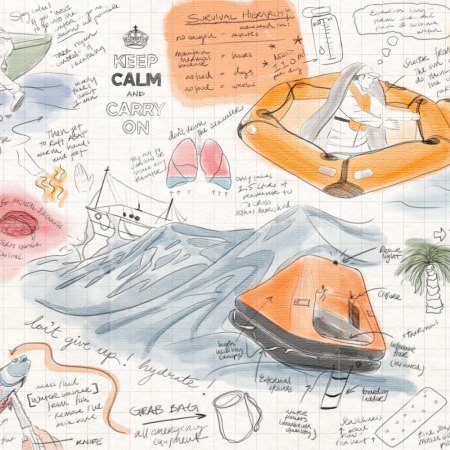You can throw a stone in most public places and hit five armchair mechanics who’ll tell you how best to maintenance your car.
But when it comes to bicycles, even regular riders are sometimes ignorant to the basics of upkeep.
Regardless of whether you’re a single-speed commuter or a fully-kitted weekend warrior, these five key skills will save you time and money — and possibly paint you the hero next time some befuddled stranger’s chain needs fixing.
1. Watch your tires and tubes
Imagine: you’re riding solo up in the Cascades. You’re on a mountain pass, 30 miles away from the nearest town.
And you get a flat tire.
This would not be a freak-out moment for any experienced cyclist, as they will have prepared for this moment. They’ll whip out their CO2 or frame-pump, a tire lever and a spare tube — and within five minutes, be on their way again.
But this skill — knowing how to change a tire — is absolutely essential for anyone who owns a bike. Whether you’re commuting to work or tooling around town, it’s always a good idea to have a repair kit in your bag, complete with a spare inner tube, tire lever, CO2 cartridges/dispenser, patches and a multitool.
Lastly, give some thought to tire pressure. A properly inflated tire will give you better rolling resistance and traction in wet conditions, as well as protect against pinch flats. Checking your tire pressure before every ride is a must.
2. It’s all about the lube
Think of all those random bikes you see locked up in your hood — forlorn and rusty, looking all but forgotten by their owners.
Regular cleaning and lubing of your ride is fundamental to its performance. Unlike, say, a car engine, your bike’s drivetrain is entirely exposed to the elements, and degreasing and lubing is what sets a well-taken-care-of rig apart from those sad, crusty steeds up and down the block.
The first place to start is your chain: this is where rust and grime build up the fastest, and (assuming you’re using gears) not only will your performance will be impacted, but also the cost of eventual repairs: rusty, gunky, unlubricated chains increase the rate of wear on a bike’s cassette cogs and chainrings.
3. Understand the chains that bind you
So, you finally upgraded from that cliché neon-framed, deep-rimmed fixie and built yourself a grown-up, utilitarian bike with gears.
You’re riding along when you hit an incline, so you shift to an easier gear. Suddenly, the chain seems to stick, makes weird noises and generally doesn’t do what it’s supposed to do.
What gives?
Derailleurs are temperamental beasts — even for those of us who know how they (technically) work. There are a lot of factors that can impact derailleur performance — from alignment to chain tension to bent derailleur hangers and “cross-chaining”. It’s a lot to wrap your head around. But it’s going to affect you if you own a geared bike, and once you have a general understanding of what’s going on down there, it’s relatively easy to fix.
Mastering the art of tuning your rear (and front) derailleur is the next step towards mastering the surprisingly complex machine running silently — that is, if you’ve done your job right — beneath you.
4. Keep things tight (but not too tight)
Your bike, much like your other vehicles, is held together by humble nuts and bolts. Loosen just a few of these and you might end up with annoying creaks or — worst-case scenario — crashing in the middle of traffic.
Hence the following pro tip: check that all the bolts on your bike are tightly fastened — this means bolts on clamps that hold your handlebars in place, bolts where the chainrings attach to the crankset, etc. And if your bike is new, check these after the first few rides, and then a week or two after that.
Also, don’t over-tighten. Professional bike mechanics often use torque wrenches, and for good reason. When you start working with carbon components such as seatposts or handlebars, overtightening can actually stress the material and cause a component to fail.
5. Take a stand … but know when to seek help
Like any greasemonkey will tell you, there’s never too much that you can know about a machine. The same very much goes for bicycles.
For every one thing you don’t know how to fix yourself, you will inevitably have to pay someone else to do it for you.
For example: Is your front wheel a little wobbly? Well, someone at the shop will have to “true” it for you. To master the art of wheel-truing (and building) is one of the surest markers of someone who knows their way around a bike. And, admittedly, it’s the one upper-echelon skill that this author has yet to master himself.
Unfortunately, some of the more advanced maintenance skills we’ve discussed here demand some kind of bicycle work-stand, and well-constructed ones can sometimes be pricey. If you want to true your own wheels, a truing-stand would make your life a lot easier, too. For a fanatic, the shopping lists of obscure but ever-necessary tools goes on, likely never to be exhausted. Nevertheless, you can still do a lot of this stuff with just a multi-tool, lube, some rags and a can-do attitude.
And who knows, after a little wrenching, you may well become addicted.
—Michael C. Brown
Whether you’re looking to get into shape, or just get out of a funk, The Charge has got you covered. Sign up for our new wellness newsletter today.























